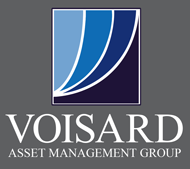Many families worry about their children’s college attendance, funding, and plan changes. A 529 plan saves for college with tax benefits. But what if the funds are unused? Are there taxes and penalties for non-qualifying expenses? A recent U.S. law change now offers more flexibility for 529 plan users.
What’s New?
In December 2022, Section 126 of the SECURE 2.0 Act introduced a rule for 529 plans. This rule, effective in 2024, allows converting unused 529 funds to a Roth IRA. It’s for children who don’t attend college or don’t use all 529 funds. Previously, nonqualified 529 plan withdrawals faced taxes and a 10% penalty. Starting in 2024, excess funds can be moved to a Roth IRA for tax-free growth.
-
What to Consider
As with all new rules, there are parameters for excess 529 plan funds to be eligible for a Roth IRA conversion. Below is a list of the qualifications for this transaction:
- The funds must be converted to a Roth IRA in the name of the 529 plan beneficiary
- The plan must have been maintained for a minimum of 15 years with the same designated beneficiary
- Any contributions to the 529 plan within the last 5 years (including earnings) are ineligible to be moved to the Roth IRA
- The conversion is subject to a lifetime maximum of $35,000 per beneficiary
- Annual Roth IRA contribution limits still apply (currently, $6,500 per year if under the age of 50). This limit includes any contribution made to a Traditional or Roth IRA apart from 529 contributions
- The beneficiary must have earned income greater than or equal to the Roth IRA contribution amount
-
Are There Tax Implications?
The conversion of excess 529 plan funds to a Roth IRA will be exempt from federal tax but may be subject to state income tax depending on the state. In short, the tax implications have a positive outlook for both owners and beneficiaries of 529 plans. They will be able to avoid income tax and a 10% penalty by rolling over excess funds that can continue to grow in a tax-free account.
-
What Are the Advantages?
The new 529 plan to Roth conversion rule is intended to increase comfortability for families looking to open and fund a 529 account. Concerns with penalties and taxation are meant to be alleviated by allowing contributors to invest with tax-free growth as early as possible. Now, individuals have the ability to invest in their loved ones’ futures while also providing them with flexibility in what that future may look like.
Conclusion
The new 529 plan rule adds flexibility in saving for education. Grasping these rules helps in efficient planning. Contributors now worry less about beneficiaries not needing college funds. Unused funds can now aid early retirement savings.
If you have any questions about education planning, please feel free to reach out to our team of professionals at Voisard Asset Management Group. We are happy to assist.



